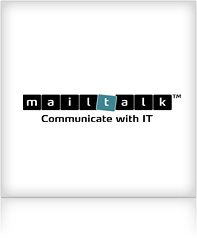What Comes After CRM? Customer Experience Management (CEM)
For perhaps the first time in history, it’s not the IT people who enter the scene with a new and smart three-letter-abbreviation that is supposed to kick-start a number of IT projects. CEM stands for ‘Customer Experience Management’, and it’s an abbreviation which, lately, has been used more and more frequently.
Today, we search on Google and ask our social networks for opinions and information like never before. We investigate and seek references non-stop. Just ask your doctor; he or she recognises this. Doctors have experienced a true explosion of patients who show up asking for strange medicine and who bring their own explanations to their self-diagnosed diseases. The same is true when we shop for goods, services, phone companies, cars etc. In short, everything.
This trend forces companies and suppliers to set up websites and e-stores, where they attempt online sales and marketing. Typically, each channel is handled separately, and so the consumer does not experience a connection.
For instance you may risk buying a bike in a store, only to receive a newsletter the following week telling you that the bike has been put on sale. How do you encourage the customer to participate in a customer loyalty programme? Can we get the customer to act as an ambassador on the social networks?
This is exactly what ‘Customer Experience Management’ is all about: The management of each customer’s experiences before, during and after shopping.
Marketing is about communication and branding to educate and attract potential customers. But where marketing has traditionally communicated through channels that have handled ‘1- to-many’ communications, the digital user demands a readjustment to ‘1-to-1’ communication.
This new requirement makes heavy demands on how companies use customer data which, typically, is to be found in various and separate background systems, from ERP and CRM systems to content management systems. We are talking about big company data.
There are many existing solutions in the market that have as their starting point data from either the CMS or the CRM system. The characteristic of all these systems is that they’re focused on the pre-sale. And they can only plan and handle the customer’s experiences within their own databases.
In a radically different manner, the CEM solution takes as its starting point the combination and synchronisation of all the company’s data from ERP, CRM and CMS systems. Moreover, many companies also invest in Unified Communications, (UC), which means that the telephone exchange must be handled on par with all other systems.
Subsequently, the CEM solution will plan the individual customer’s journey through the ‘before, during and after’ the transaction. The ‘customer’ is recognised in all types of channels, and incentives should be offered to make the customer enter loyalty programmes and to act as ambassador in the social media.
An Example
Below is an example from a bike shop that wishes to get closer to its customers. The customer has bought a mountain bike in the shop, and before the same customers reaches home, an email with the certificate of guarantee for the use with an insurance company will enter his/her mailbox. It gives the customer the experience that it is easy to shop here. In addition, it is an invitation to post the purchase on Facebook in return for receiving a free lightweight drinking bottle when visiting the shop next time. Simply by clicking a button the customer can now post the purchase on Facebook and share his/her recent acquisition with his/her friends. As a thank you for sharing, a digital coupon is issued at the same time. This will tempt the customer to visit the shop again.
To reach the ‘fellowship’ loyalty level, ten other customers, who also just bought their mountain bikes in the shop, are offered an hour’s worth of instruction in the woods with a professional guide. The customers are now ‘befriended’ with the shop and buy lots of extra equipment.
The need for handling and recognising the customer several places on the way does not only apply to B-2-C scenarios. At MailTalk, we rename CEM to ‘Citizens Experience Management’ or ‘Client Experience Management’. Thus, CEM solutions are regular visitors in both the public and private sphere. Public institutions still send out meeting and notification letters.
Important cost savings and streamlining could be gained by making it possible for the individual citizen to automatically book the right social worker. The time of the meeting could be sent out by e-mail, and the citizen could accept the appointment by a simple click. Subsequently, a meeting room would be booked automatically, the appointment was entered into the social worker’s Outlook calendar, and a reminder was sent to the citizen by SMS on the morning of the appointment. A far more flexible digital solution for the citizens.
Time is outrunning bulk e-mails and mass communication. Customers want to be recognised and treated loyally in all media.
—————————-
This article was first published on Brand Movers and is reprinted here with permission from Kevin Petersen.










